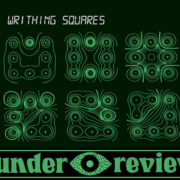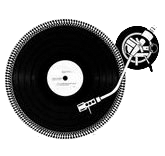Dewey Mahood on Don Cherry – “Organic Music Society” 

Dewey Mahood has long been a fixture on the site, popping up in longtime favorites Eternal Tapestry, Gärden Söund, Edibles, and on his own as Plankton Wat. Its with the latter that Mahood is now embarking on his latest LP for Thrill Jockey, and his sound is as cavernous and consuming as ever. As with most of his bands, Mahood is a cosmic traveler, utilizing the guitar as a divining rod for the inner thrum of the unconscious mind. Naturally that begs the question of what gems has he been letting linger in his personal collection, so I reached out to Dewey to see what favorite is haunting his shelves these days. Check out Dewey’s exploration of Don Cherry’s masterpiece Organic Music Society below.
“I found this gem of a record while combing through the used record bins at Music Millennium in Portland, Oregon,” recalls Mahood. “This was in the early 2000’s before the internet had really caught on, and we still learned about music by just going into record stores and browsing around. By the late 90’s I wasn’t listening to much rock music, and had become slightly obsessed with collecting everything I could find by my favorite jazz players – John Coltrane, Charles Mingus, Eric Dolphy, Miles Davis, and that whole late 50’s to early 70’s golden age. I was very familiar with Don Cherry from Ornette Colman’s band, and Don’s 1960’s Blue Note solo albums, but his 70’s era was a mysterious thing. Records of legend, but unknown, and very difficult to find. You can probably imagine my surprise as I landed on the glossy and brightly colored hand drawn cover (by Swedish artist Moki Karlsson, later married to Don) with the name DON CHERRY scrawled across the top in a sort of Blue Cheer psychedelic lettering style. I paused just staring at the front cover knowing this was something of a holy grail in the world of underground improvisational music. Opening the gatefold jacket, I was further in awe of the primitive DIY graphics, black and white photo college, and beautiful handwritten song titles and notes. I just kind of stared at it for a while, taking it all in, holding my breath, having an “oh shit” moment. I was as excited as a kid in a candy store as I brought my treasure home.”

“Once I got home, and put the first side on the turntable I was again surprised as this really didn’t sound like any Don Cherry music I was accustomed to at the time. It has this sparse Lo-Fi sound quality, recorded on some small portable tape deck, and the music is much closer to raga then jazz, even though the first piece is titled ‘North Brazilian Ceremonial Hymn.’ Amongst the vocal chatting, and droning tamburas, there is some wild free improvisational berimbau playing by the great Nana Vasconcelos. The sounds are all loose, and playful, a joyful noise indeed! The later songs on the first LP find Cherry playing flute and trumpet with a minimal piano and hand drum backing — the sound of people playing together for fun, relaxation, and some kind of spiritual enlightenment. It’s not Pop or Jazz, or any other common genre, but a type of searching, exploring musical play. Traditional and non-traditional at the same time. It’s on the second LP (this is a double album) where the music heats up with a hypnotic Terry Riley tune, and a lovely take on the Pharoah Sanders classic The Creator Has a Master Plan played by a loose and ecstatic ensemble of trumpets, flute, piano, drumming and singing outside in a dome in the Swedish summer air. The album ends with Cherry playing trumpet, piano and singing along with what the notes describe as a symphony orchestra of 50 teenagers. It’s a positive, uplifting experience, totally non-commercial, making music for the pure fun of it. I wish I could have been one of those teenagers!”
“After falling in love with this album I bought a CD of Cherry’s 1975 masterpiece Brown Rice, and a new musical direction started forming in my mind. A music beyond genre or style or reference, a pure music of sound, playfulness, being completely free and loose, and not being anything other than what happens in the moment. This spirit informs the early period of Eternal Tapestry,” admits Dewey, “records like Altar of Grass and Mystic Induction, and along with Brian Eno records Another Green World and Before and After Science, the spiritual center of everything I’ve recorded as Plankton Wat. The true beauty of Cherry’s 1970’s music is he seems to embrace musical traditions from around the world without ever sounding like any one in particular. There are flavors of Indian, Asian, African, and Latin American sounds, as well as jazz and folk, all blended up into a hearty stew of cosmic music. A universal questing sound, discovering ancient wisdom, and just hanging out playing the good music with friends.”
I’d wholeheartedly agree with Dewey here. While I didn’t come to Cherry’s music as early as the 90s’, it instead crept into my life during the early blog download era. I was also greatly drawn to the free-form albums of the ‘70s period, Brown Rice and Organic Music Society forming the crux of the crush. Thankfully in the last few years, its become more available on reissue, turning on a whole new generation. Nab a copy where you can and get prepped for Dewey’s new burner for Thrill Jockey later in February.
Support the artist. Buy it HERE.









